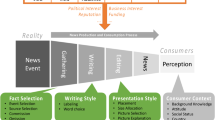Abstract
Mining causality is essential to provide a diagnosis. This research aims at extracting the causality existing within multiple sentences or EDUs (Elementary Discourse Unit). The research emphasizes the use of causality verbs because they make explicit in a certain way the consequent events of a cause, e.g., “Aphids suck the sap from rice leaves. Then leaves will shrink . Later, they will become yellow and dry.”. A verb can also be the causal-verb link between cause and effect within EDU(s), e.g., “Aphids suck the sap from rice leaves causing leaves to be shrunk” (“causing” is equivalent to a causal-verb link in Thai). The research confronts two main problems: identifying the interesting causality events from documents and identifying their boundaries. Then, we propose mining on verbs by using two different machine learning techniques, Naïve Bayes classifier and Support Vector Machine. The resulted mining rules will be used for the identification and the causality extraction of the multiple EDUs from text. Our multiple EDUs extraction shows 0.88 precision with 0.75 recall from Naïve Bayes classifier and 0.89 precision with 0.76 recall from Support Vector Machine.
Similar content being viewed by others
References
Paul K Moser. The Oxford Handbook of Epistemology. Oxford University Press, New York, USA, 2002.
Girju R. Automatic detection of causal relations for question answering. In Proc. the 41st Annual Meeting of the Association for Computational Linguistics, Workshop on Multilingual Summarization and Question Answering-Machine Learning and Beyond, Sapporo, Japan, 2003, pp.76–83.
Chang D S, Choi K S. Causal relation extraction using cue phrase and lexical pair probabilities, In Proc. Int. Joint Conf. Natural Language Processing, Hainan Island, China, 2004, pp.61–70.
Marcu D, Echihabi A. An unsupervised approach to recognizing discourse relations. In Proc. the 40th Annual Meeting of the Association for Computational Linguistics Conference, Philadelphia, PA, 2002, 368–375.
Inui T, Inui K, Matsumoto Y. Acquiring causal knowledge from text using the connective markers. Journal of the Information Processing Society of Japan, 2004, 45(3): 919–933.
Torisawa K. Automatic extraction of commonsense inference rules from corpora. In Proc. The 9th Annual Meeting of the Association for Natural Language Proceeding, Japan, 2003, pp.318–321.
Carlson L, Marcu D, Okurowski M E. Building a Discourse-Tagged Corpus in the Framework of Rhetorical Structure Theory. Current Directions in Discourse and Dialogue, Jan van Kuppevelt, Ronnie Smith (eds.), Kluwer Academic Publishers, 2003, pp.85–112.
Mitchell T M. Machine Learning. Singapore: The McGraw-Hill Companies Inc. and MIT Press, 1997.
Cristianini N, Shawe-Taylor J. An Introduction to Support Vector Machines. Cambridge University Press, Cambridge, UK, 2000.
Glennan S S. Rethinking mechanistic explanation. Philosophy of Science, 2002, (69): 342–353.
Walker M, Joshi A, Prince E. Centering in Naturally Occuring Discource: An Overview in Centering Theory of Discourse. Oxford: Calendron Press, 1998, pp.1–28.
Sudprasert S, Kawtrakul A. Thai word segmentation based on global and local unsupervised learning. In Proc. National Computer Science and Engineering Conference, Chonburi, Thailand, 2003, pp.1–8.
Chanlekha H, Kawtrakul A. Thai named entity extraction by incorporating maximum entropy model with simple heuristic information. In Proc. Int. Joint Conf. Natural Language Processing, Hainan Island, China, 2004, pp.1–7.
Pengphon N, Kawtrakul A, Suktarachan M. Word formation approach to noun phrase analysis for Thai. In Proc. Symposium on Natural Language Processing, Thailand, 2002, pp.277–282.
Chareonsuk J, Sukvakree T, Kawtrakul A. Elementary Discourse Unit Segmentation for Thai Using Discourse Cue and Syntactic Information. In Proc. National Computer Science and Engineering Conference, Thailand, 2005, pp.85–90.
Miler G A, Beckwith R, Fellbuan C, Gross D, Miller K. Introduction to Word Net. An Online Lexical Database, 1993.
Vardeman S B. Statistics for Engineering Problem Solving. PWS Foundation in Engineering Series, Boston: IEEE Press, USA, 1998.
Pechsiri C, Kongwan A, Kawtrakul A. Agricultural knowledge discovery from semi-structured text. In Proc. AFITA/WCCA, Thailand, 2004, pp.117–125.
Author information
Authors and Affiliations
Corresponding author
Additional information
This work has been supported by the National Electronics and Computer Technology Center (NECTEC) under Grant No. NT-B-22-14-12-46-06 and partially supported by the FAO grant.
Rights and permissions
About this article
Cite this article
Pechsiri, C., Kawtrakul, A. Mining Causality for Explanation Knowledge from Text. J. Comput. Sci. Technol. 22, 877–889 (2007). https://doi.org/10.1007/s11390-007-9093-8
Received:
Revised:
Published:
Issue Date:
DOI: https://doi.org/10.1007/s11390-007-9093-8




